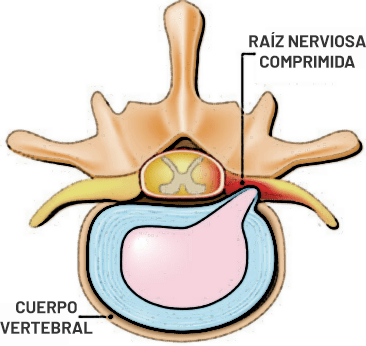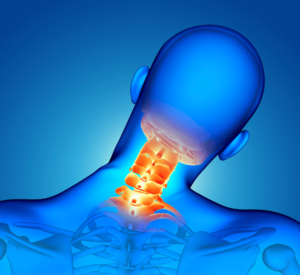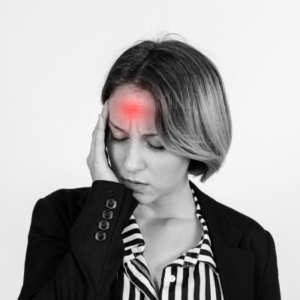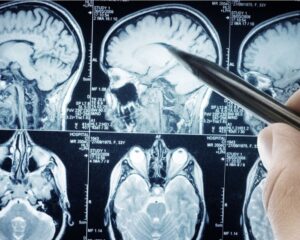
Neuroplasticitat i tumors cerebrals
¿Qué es la Neuroplasticidad? La neuroplasticidad es la capacidad que tienen algunas zonas del sistema nervioso para adaptarse a nuevas situaciones, ya sea fisiológicas (ser


¿Qué es la Neuroplasticidad? La neuroplasticidad es la capacidad que tienen algunas zonas del sistema nervioso para adaptarse a nuevas situaciones, ya sea fisiológicas (ser

Hernias cervicales: tratamiento no quirúrgico y quirúrgico Una gran proporción de protrusiones y pequeñas hernias discales cervicales no requerirán tratamiento quirúrgico en ningún momento. Ejercicios

Preguntas frecuentes sobre la neuralgia del trigémino “Me acaban de diagnosticar de una neuralgia trigeminal, y he oído que se puede operar… ¿cuándo debo operarme?

¿Puedo yo mismo saber si el dolor que tengo es dolor neuropático? Existen determinados síntomas y signos que hacen sospechar que un dolor es probablemente

¿Es la neuralgia del trigémino una enfermedad curable? Dependerá del tipo de dolor, de las características de este y en muchos casos del tiempo de

Ante el diagnóstico de un tumor cerebral es importante la valoración cuidadosa de las regiones cerebrales cercanas al tumor, sobre todo si se requiere una
CONSULTES A BARCELONA
C/ Sant Quintí, 89, 08041 Barcelona.
C/ de l’Escorial, 148, Gràcia, 08024 Barcelona.
CONTACTE
Tel: +34 686 716 660
Email: [email protected]
📣📣📣 Ya está abierto el plazo de inscripción para nuestro Workshop!
🗓️ 13 y 14 febrero 2025
📍 Recinto Modernista del Hospital de Sant Pau
Abajo os dejamos el enlace para poder inscribiros 📝 y un vídeo por si alguien aún se lo está pensando 🤔!
📝 https://gruporic.servicioapps.com/w/workshopcefaleas/186384/inscripcions?preview=0
A case series about long term outcomes regarding deep brain stimulation for chronic refractory #ClusterHeadache finds a large number of these patients experienced long term benefit
https://headachejournal.onlinelibrary.wiley.com/doi/full/10.1111/head.14875
Juan Ángel Aibar-Durán MD, @NMorolln @robertbelvis et al
Ya tenemos fecha para la 5°edición de nuestro Workshop en terapias avanzadas en cefaleas y neuralgias, con fantásticos ponentes, interesantísimos coloquios y talleres!
Te esperamos:
🗓️ 13 y 14 febrero 2025
📍 Recinto Modernista Hospital de Sant Pau
No dejes que te lo cuenten!
Copy Rights © 2022. All rights Reserved.
| Galeta | Duración | Descripción |
|---|---|---|
| cookielawinfo-checkbox-analytics | 11 months | Aquesta cookie és generada per GDPR Cookie Consent plugin. Les cookies són usades per emmagatzemar el consentiment de l'usuari per a les cookies a la categoria "Analítica". |
| cookielawinfo-checkbox-functional | 11 months | Aquesta cookie ha estat generada per GDPR cookie consent per registrar el consentiment de l'usuari per a les cookies a la categoria "Funcionals". |
| cookielawinfo-checkbox-necessary | 11 months | Aquesta cookie és generada per GDPR Cookie Consent plugin. Les cookies són usades per emmagatzemar el consentiment de l'usuari per a les cookies a la categoria "Necessàries". |
| cookielawinfo-checkbox-others | 11 months | Aquesta cookie és generada per GDPR Cookie Consent plugin. Les cookies són usades per emmagatzemar el consentiment de l'usuari per a les cookies a la categoria "Altres". |
| cookielawinfo-checkbox-performance | 11 months | Aquesta cookie és generada per GDPR Cookie Consent plugin. Les cookies són usades per emmagatzemar el consentiment de l'usuari per a les cookies a la categoria "Rendiment". |
| viewed_cookie_policy | 11 months | Aquesta cookie és generada per GDPR Cookie Consent plugin i és usada per emmagatzemar dades, hagis consentit o no l'ús de les cookies. Aquestes no emmagatzemen dades personals. |
La neuromodulació és un camp de recerca clínico-quirúrgica que té com a objectiu restablir la funció normal de determinats circuits patològics (majoritàriament circuits del moviment o circuits relacionats amb el dolor). Aquest objectiu es pot aconseguir mitjançant l’ús de teràpies poc invasives que actuen directament sobre el nucli o nervi afectat i que en un percentatge no menyspreable dels casos poden ser molt efectives. Algunes d’aquestes teràpies inclouen fàrmacs neuromoduladors, tècniques de radiofreqüència o l’implant d’elèctrodes d’estimulació cerebral, medul·lar o radicular.
La valoració per un equip multidisciplinar és important per poder escalonar els tractaments, des dels menys invasius (fàrmacs) fins als més invasius (cirurgies), passant per teràpies intermèdies.
És important reconèixer que no tots els tipus de dolors són tributaris de teràpies de neuromodulació, i la correcta selecció del pacient és la millor garantia per obtenir un resultat clínic satisfactori.
Neuromodulation is a clinical-surgical research field whose objective is to restore the normal function of pathological circuits (mostly movement circuits or pain-related circuits). This objective can be achieved using minimally invasive therapies applied to the affected nucleus or nerve, which in a non-negligible percentage of cases will be very effective. Some of these therapies include neuromodulatory medication, radiofrequency techniques or the implantation of electrodes for stimulation of the brain, spinal cord, or nerve roots.
The assessment by a multidisciplinary team is important so that the treatment can be “staggered” from the least invasive (medication) to the most invasive (surgery), passing through intermediate therapies.
It is important to know that not all kind of pains are tributaries of neuromodulation therapies, being the correct selection the best guarantee to obtain a satisfactory result.
La neuromodulación es un campo de investigación clínico-quirúrgica cuyo objetivo es restablecer la función normal de determinados circuitos patológicos (mayoritariamente circuitos del movimiento o circuitos relacionados con el dolor). Este objetivo puede ser logrado mediante el uso de terapias poco invasivas que actúan directamente sobre el núcleo o nervio afectado y que en un porcentaje no despreciable de los casos pueden ser muy efectivas. Algunas de estas terapias incluyen fármacos neuromoduladores, técnicas de radiofrecuencia o el implante de electrodos de estimulación cerebral, medular o radicular.
La valoración por un equipo multidisciplinar es importante para poder escalonar los tratamientos, desde los menos invasivos (fármacos) hasta los más invasivos (cirugías), pasando por terapias intermedias.
Es importante conocer que no todos los tipos de dolores son tributarios de terapias de neuromodulación, siendo la correcta selección del paciente la mejor garantía para obtener un resultado clínico satisfactorio.